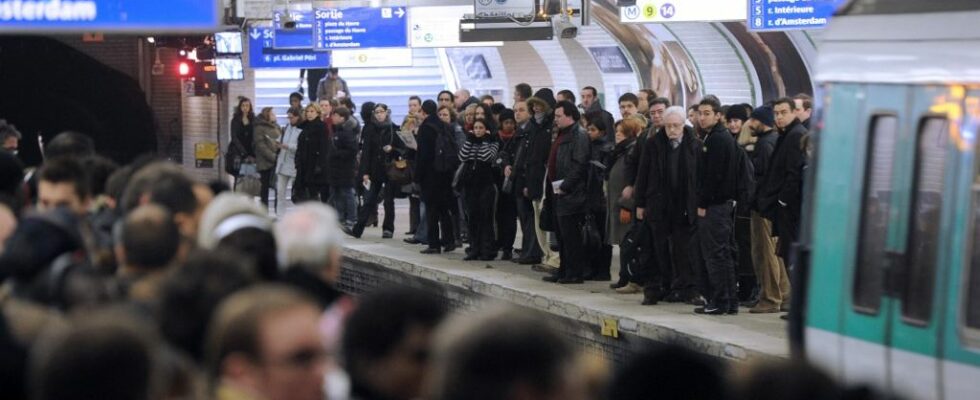Will Ile-de-France residents finally stop complaining, rightly, about crowded trains and late transport? Because if the situation has improved since the beginning of January, “the RATP network is still in great pain”, regrets Valérie Pécresse, the president of Ile-de-France Mobility (IDFM). This Friday, the Parisian transport authority however presented a crisis exit plan aimed at a gradual return to a normal level of service for next April, after several months of difficulty for users.
“Public transport attendance is now around 90% of what it was in 2019,” said the boss of the authority responsible for organizing transport in Ile-de-France. However, at the end of last year, “a quarter of the bus offer was not made and between 10 and 20% of the metro offer”, noted the president of IDFM. She had convened an extraordinary board of directors bringing together all the transport players in the Ile-de-France region to present their roadmap.
Causes identified at RATP
Since January, 17% of RATP buses have not run in Paris and in the inner suburbs and in the metro, three lines out of fourteen are still in difficulty and five fragile, according to the report drawn up by IDFM. “I want to tell the millions of users my regrets, my apologies for this situation and above all, my deep desire to improve things”, immediately recognized Jean Castex. Since his arrival at the head of the RATP in November, he has constantly recognized the many difficulties facing the operator.
Recruitment difficulties, increase in absenteeism, explosion in the number of resignations – just over 1,000 in 2022 compared to around 400 before the Covid. The causes of the degradation of service are now known. Added to this are problems related to maintenance, assures Jean Castex, where “we have difficulty recruiting and where, moreover, there is a latent social movement”, leading to an insufficient number of available metros. Last point raised by the boss of the RATP: the number of abandoned packages. It has quadrupled between pre-Covid and today, which “weighs heavily on the service”, he says.
Big problems on the RER lines too
To achieve the objective of a return to normal in April, the RATP is banking on a massive recruitment campaign. “We intend to recruit 4,500 people, including 2,500 bus drivers and 400 metro drivers, almost double that in 2022,” announced the former Prime Minister. Jean Castex must also fulfill a major objective: to be there for the 2024 Olympic Games, “which is anticipated”.
The SNCF was also summoned to explain itself while the situations on the RER B (partially operated by the SNCF) and D exasperate the users. “We are not there”, recognized the CEO of SNCF Voyageurs, Christophe Fanichet. Despite everything, “we are on average at 91% in terms of punctuality” on the whole network, he tempered, insisting on the need to regenerate the network to improve the service. A network, the busiest in Europe, where “30% of signal boxes were built before 1950”, recalled Mathieu Chabanel, CEO of SNCF Réseau.
Buses in the outer suburbs, the only reason for satisfaction
The year 2023 is therefore shaping up to be a difficult year for many users in the Ile-de-France region who will be subject to line interruptions to carry out work. “It’s a necessary evil but (it) can’t be done anyhow. I would like us to study the possibility of express replacement buses, ”said Valérie Pécresse.
The only reason for immediate satisfaction is the significant improvement in the bus network in the outer suburbs, where “there has been a very strong recovery”. All of these networks had less than 5% unrealized service in January.

